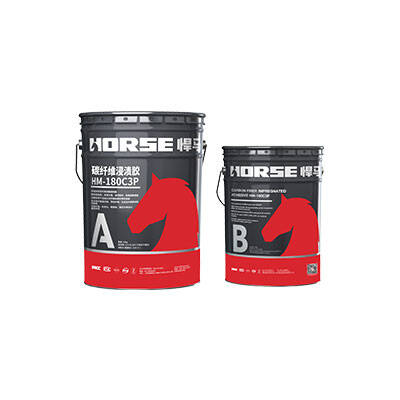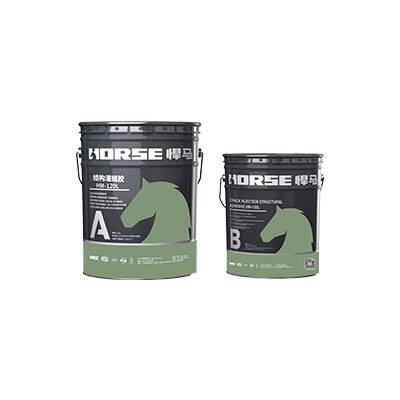Maladies courantes des ponts en béton : écaillage, câbles exposés, nid d'abeilles, corrosion du béton, fissures des treillis.
Écaillage, câbles exposés
Analyse des causes : mauvaise qualité de construction, par exemple, déplacement du bloc de protection renforcé lors du coulage, proximité de la barre d'acier avec le gabarit en raison d'une couche protectrice trop fine, imprégnation par les ions chlorure de l'air, corrosion de l'acier et écaillage du béton.
Conseil d'élimination : afin d'éviter le cercle vicieux de la corrosion et de la dilatation des barres d'acier et de l'écaillage du béton, il est recommandé d'isoler l'exfoliation et les nervures de l'air et d'utiliser du mortier époxy ou de la résine époxy pour réparer la surface. La saleté superficielle est d'abord éliminée et une profondeur de 30 mm est découpée à l'aplomb. Le mortier époxy est ensuite appliqué au burin.
Analyse des causes : En raison du manque de force de liaison du béton sous l'action répétée des véhicules, celui-ci est exfolié par les substances chimiques présentes dans l'air, ce qui peut facilement provoquer un décollement important de la poutre, entraînant ainsi un cercle vicieux de corrosion des barres d'acier et de décollement de la partie inférieure de la poutre.
Conseils d'élimination : Le béton frais peut généralement être utilisé pour la réparation. Un bon nivellement du béton et une attention particulière doivent être apportés pour garantir une bonne qualité et une grande facilité de compactage afin de réduire les difficultés de compactage. La réparation du béton peut être effectuée par coulage direct, projection ou injection de coulis.
Analyse des causes : Le raclage d'un véhicule ou un impact externe a provoqué l'écaillage des armatures du béton.
Conseil d'élimination : Il est recommandé d'installer une carte et un support de très haute résistance. Parallèlement, le béton est réparé avec du béton frais. Le béton utilisé pour la réparation doit être bien calibré et une attention particulière doit être portée à sa qualité et à sa facilité d'utilisation afin de réduire la difficulté du compactage. La réparation du béton peut être réalisée par coulage direct, projection ou injection de coulis.
Rayon de miel
Analyse des causes : mauvaise construction. Débourrage insuffisant, fente de coffrage inadéquate, perte de coulis de ciment, etc.
Méthodes d'élimination : le béton frais peut généralement être utilisé pour la réparation. Le béton utilisé pour la réparation doit être de bonne granulométrie et une attention particulière doit être portée à la qualité et à la facilité du bourrage afin de réduire les difficultés.
Analyse des causes : la surface du coffrage n'est pas lisse et le mouillage insuffisant, ce qui entraîne l'absorption de l'eau présente dans le béton de la surface du composant.
Méthodes d'élimination : le béton frais peut généralement être utilisé pour la réparation. Le béton utilisé pour la réparation doit être de bonne granulométrie et une attention particulière doit être portée à la qualité et à la facilité du compactage afin de réduire les difficultés de compactage.
Corrosion du béton
(pénétration de chlorure, réaction alcali-silice, sulfate, corrosion acide, gel-dégel)
La raison est que la quantité d'asphalte n'est pas suffisamment contrôlée pendant la construction, ce qui réduit la rugosité de la surface et rend l'évacuation de l'eau difficile. Le drainage des joints entraîne un écoulement de l'eau vers la table.
Conseil d'élimination : afin d'éviter le cercle vicieux de la corrosion, de la dilatation et de l'écaillage du béton, il est conseillé d'isoler les zones corrodées et exfoliées de l'air et d'utiliser du mortier époxy ou de la résine époxy pour réparer la surface. La saleté superficielle est d'abord éliminée et une profondeur de 30 mm est découpée au fil à plomb. Le mortier époxy est ensuite appliqué au burin.
Analyse des causes : le drainage du tablier du pont n'étant pas régulier, l'emplacement du trou de drainage est inapproprié, ce qui entraîne le lessivage de la structure par les eaux de pluie.
Proposition d'élimination : l'étanchéité du tablier du pont est d'abord traitée, puis le mortier époxy est appliqué artificiellement sur le composant corrodé.
Fissure réticulée
L'analyse des causes est principalement due à la chaleur interne de l'eau du béton, à la différence de température extérieure, aux variations de température quotidiennes et à l'influence du soleil.
Suggestion d'élimination : une méthode de réparation de surface et un mortier de ciment artificiel peuvent être utilisés.


































